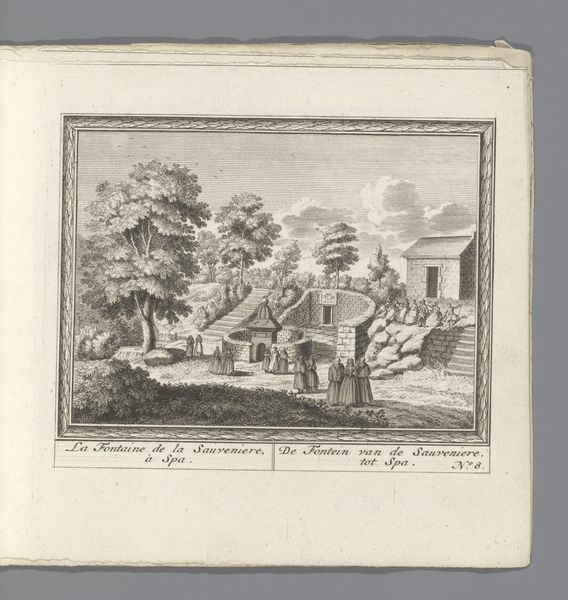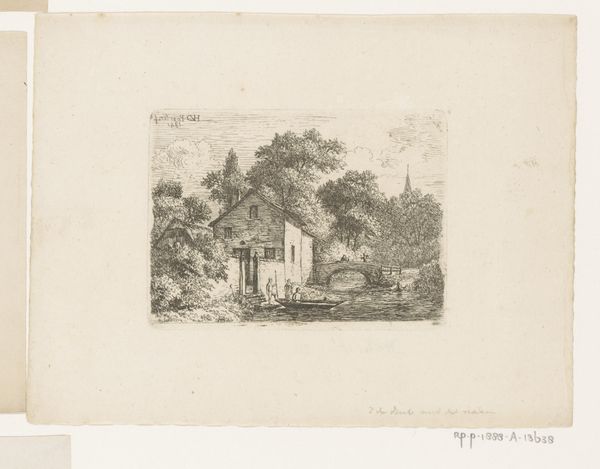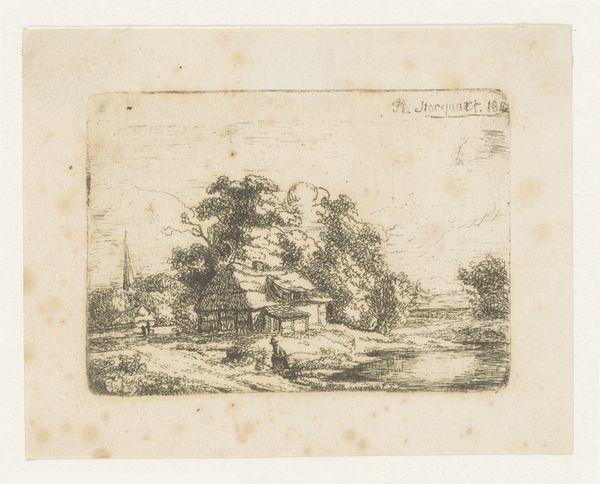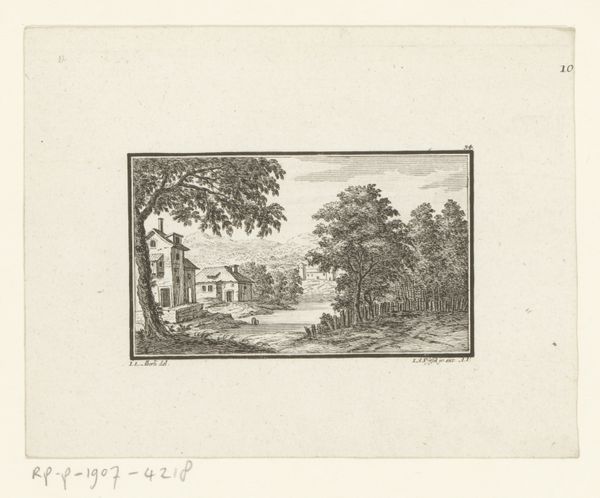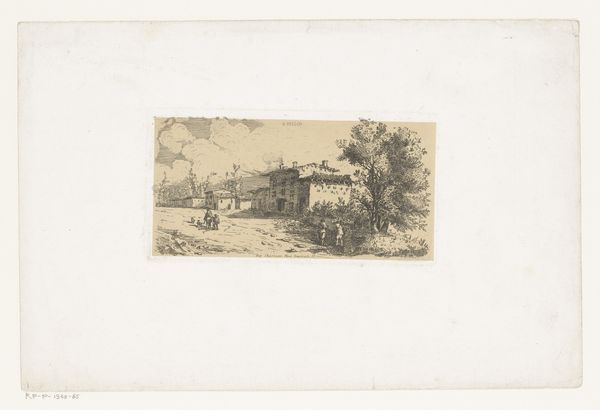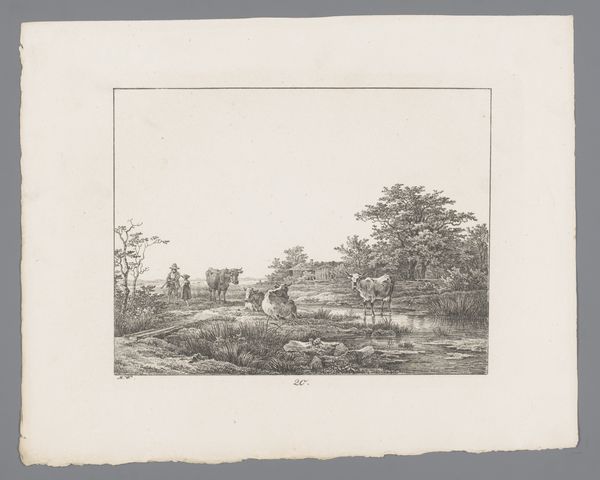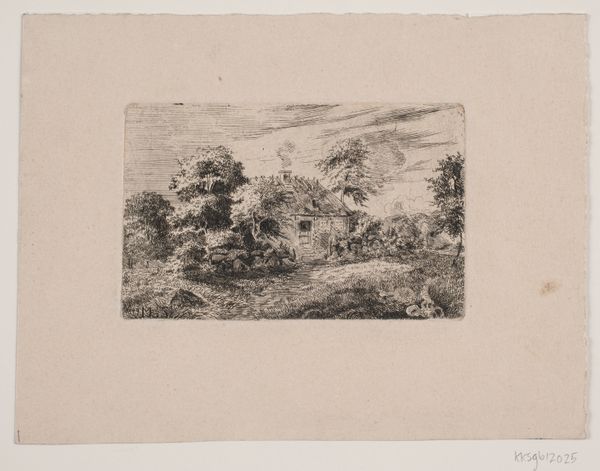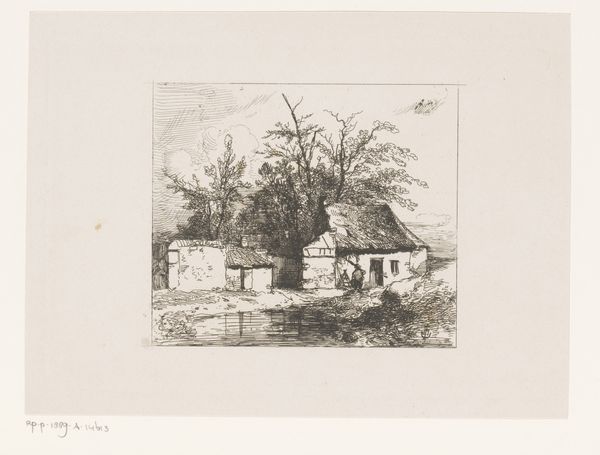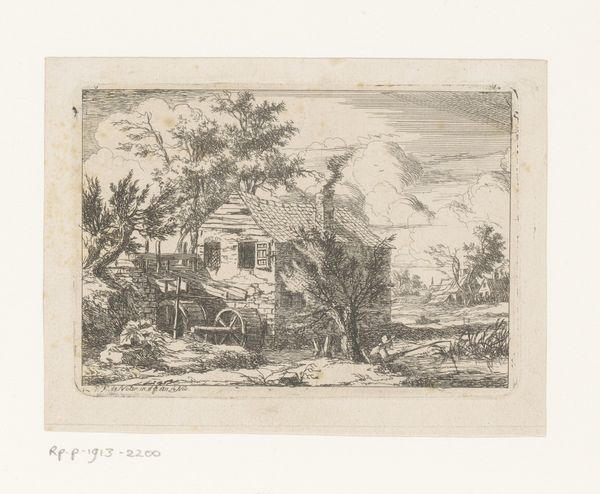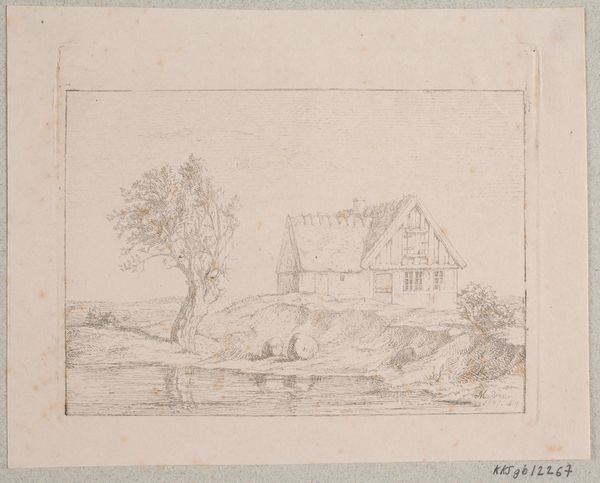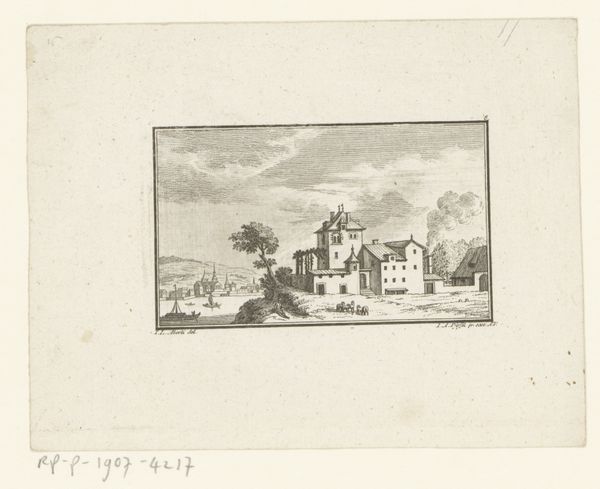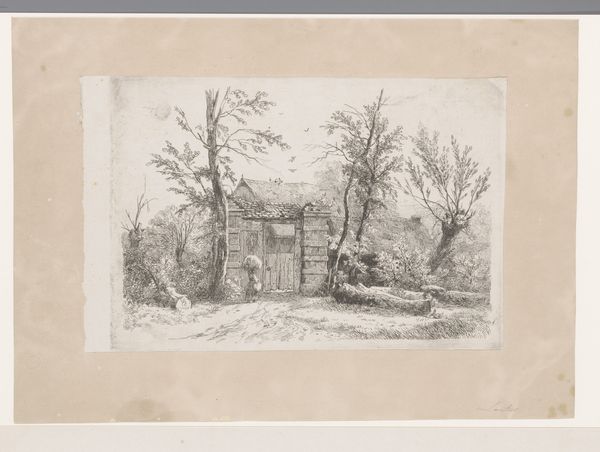
print, engraving
# print
#
landscape
#
line
#
engraving
#
realism
Dimensions: 55 mm (height) x 78 mm (width) (plademaal)
Curator: This is B. Flügge's "Landskab med bygning," or "Landscape with Building," created in 1761. It's a delicate engraving, currently held at the SMK, Statens Museum for Kunst. Editor: My initial response is one of quiet observation. The line work, so precise and detailed, feels almost like a stage set, but for a rather somber drama. It evokes a feeling of stillness. Curator: Yes, Flügge, while perhaps not a household name now, was part of a wave of artists who engaged with the prevailing aesthetics and societal shifts of his era. Landscapes at this time were often loaded with coded messages, reflecting ideas about property, social order, and the individual's relationship to the environment. Editor: That's precisely what intrigues me. We have this rather austere building, a couple of figures in the mid-ground... Are they merely inhabitants, or are they positioned to convey a hierarchy? Who had access to such a landscape, and who was excluded? The work definitely seems to participate in an ideological positioning through spatial awareness. Curator: I agree. Consider, too, the realism employed. While seemingly objective, the choices in what to depict, the scale of the building versus the figures, the overall composition—it’s never neutral. These choices reinforce certain values and perspectives of the ruling classes during the Enlightenment. And perhaps critique it, slightly, with the melancholic mood you mentioned. Editor: It's as if Flügge offers us a window onto a specific cultural moment, inviting us to analyze its underlying power structures. How might this image be received, especially from the perspective of marginalized communities within the society of 1761? That context of class, of who the building serves and protects, is essential. Curator: Indeed, thinking about this image through a contemporary lens helps us deconstruct the supposed objectivity of the landscape genre and appreciate its subtle but pervasive role in shaping societal narratives. Editor: Ultimately, what might appear a simple engraving resonates with complexities when interrogated from angles beyond the artist's life; it's an illustration of socio-historical perspectives and an aesthetic one. Thank you. Curator: A vital point to bring attention to for anyone interpreting such historical images today.
Comments
No comments
Be the first to comment and join the conversation on the ultimate creative platform.
